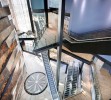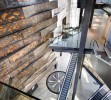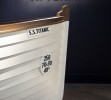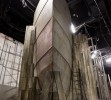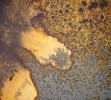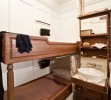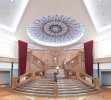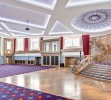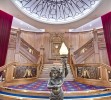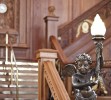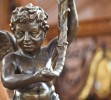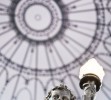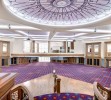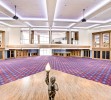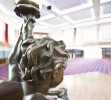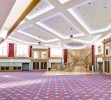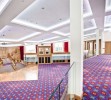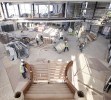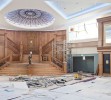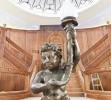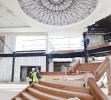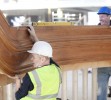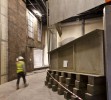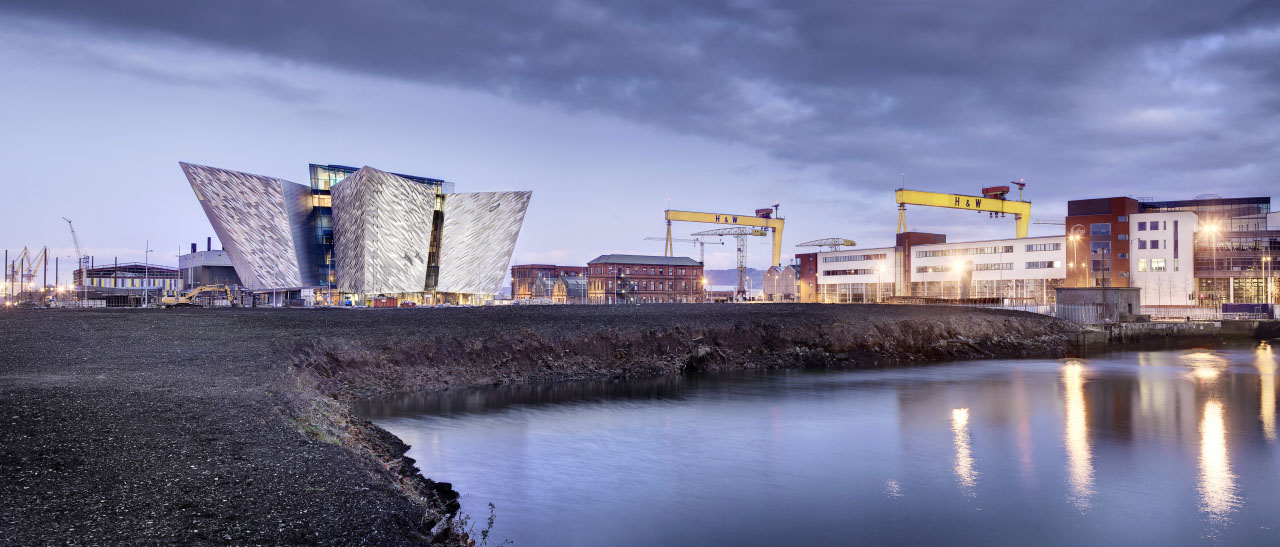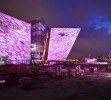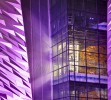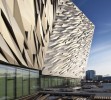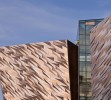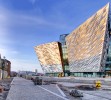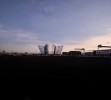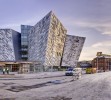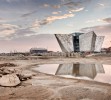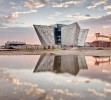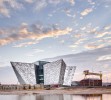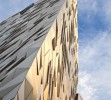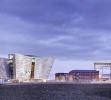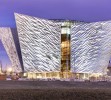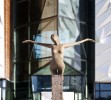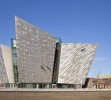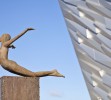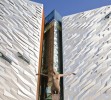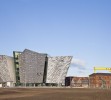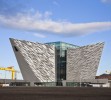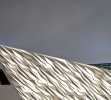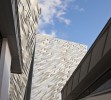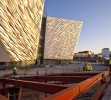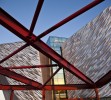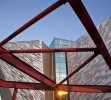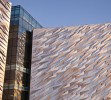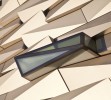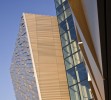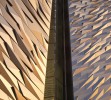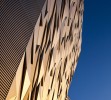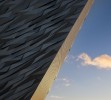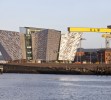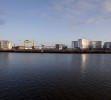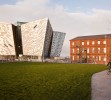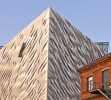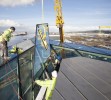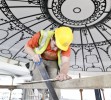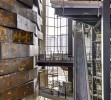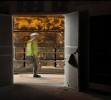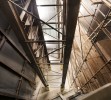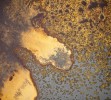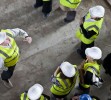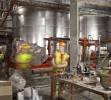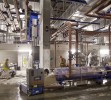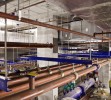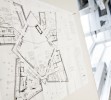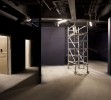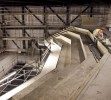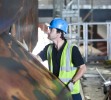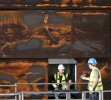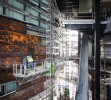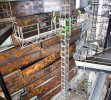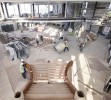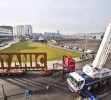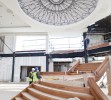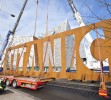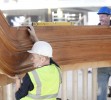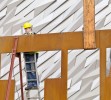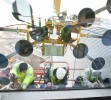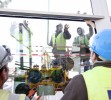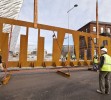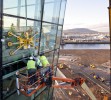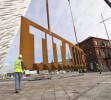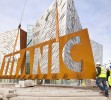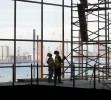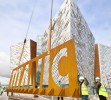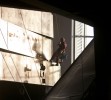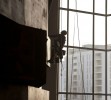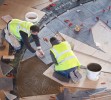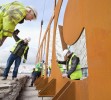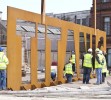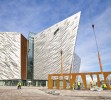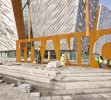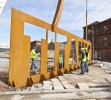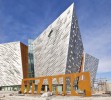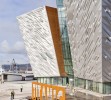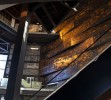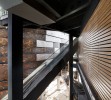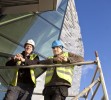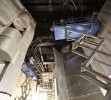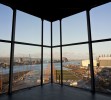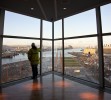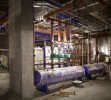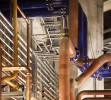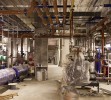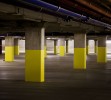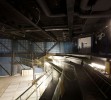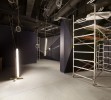Titanic Signature Project: An Exploration of Belfast's Shipbuilding Past
Video
A new exhibition center in Belfast tells the story not only of the Titanic but of the long maritime history of this iconic city.
One hundred years after the RMS Titanic’s maiden voyage and tragic sinking, visitors of the Titanic Signature Project in Belfast, UK, will be able to delve deep into the story of the Titanic and Belfast’s rich ship-building history. The five-level, 12,000 sq. m. (129,166 sq. ft.) building features a glass-walled atrium, which leads visitors to various exhibits throughout the building. The lofty space with irregularly angled forms provides the perfect introduction for the displays that follow.
The Titanic Signature Project’s nine galleries are laid out in “episodes.” This episodic approach to the project came about due to the multifaceted nature of the Titanic story itself. “Our first recommendation was that it couldn’t just be a story about one tragic ship,” said Eric Kuhne, AIA, founding partner of CivicArts, LLP, a research and design practice located in London. “It had to be a story of over 400 years of maritime excellence in Belfast.”
CivicArts worked closely with Event, designers of the Titanic Experience exhibition, to develop the internal layout and circulation pattern of the building. Rather than simply capturing the tale of the Titanic, the Titanic Signature Project details the history of Belfast as a maritime city with the Titanic being an element of the expansive story.
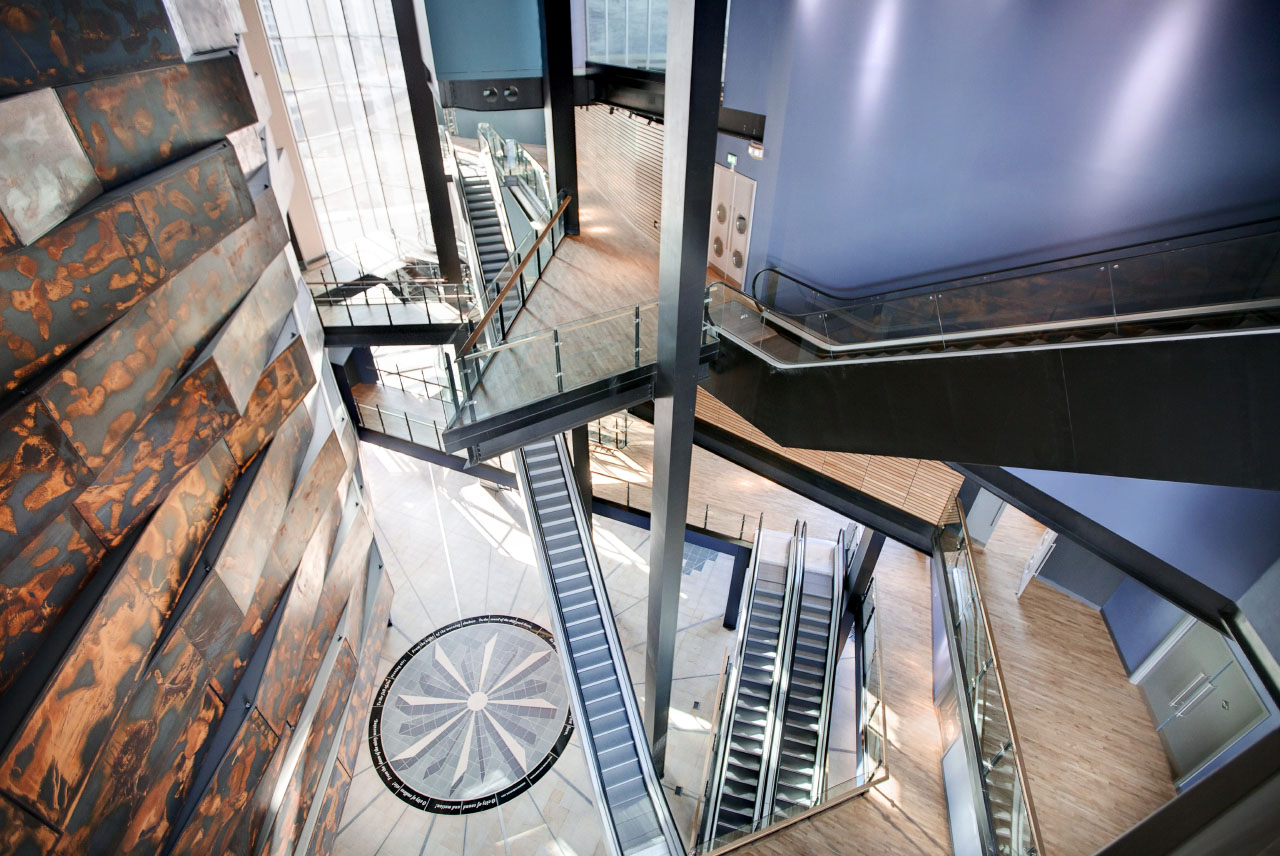
“We have two stories here: Over four centuries of innovation, creativity, and production of the finest ships in the world. And then, of course, you have how that intersected with the building of the Titanic itself,” Kuhne says. “People think Belfast kind of just collapsed after the Titanic tragedy, but in fact, it more than doubled in ship-building activity after that. So, I think that balancing in between those two impacts the way the gallery was sorted out.”
“The most important thing was we wanted to make it so people could go through the galleries and get the whole story,” Kuhne says. “It was originally planned to be a 90-minute tour, but people are doing it in three, sometimes four hours, because it’s so packed with [information].”
One building, multiple metaphors
In addition to the designing the unique layout of the interior of the building, CivicArts also had special considerations to make for the exterior of the building.
“Most of the past hundred years has been about building things that look the same and would fit anywhere, but what we try to do is try to respect the authenticity of the place,” Kuhne says. “So the building design spawns from everything from glorious photos of ships being built on Harland and Wolff shipyard, spectacular imagery of all those construction scaffoldings and ships' hulls, rising up above the dry docks.”
Designers went through six design phases or evolutions prior to deciding on the final design, which is a combination of elements from four design phases. The first evolution, Crystal Clear, was an artistic interpretation of the North Atlantic’s icy conditions – hard edges and flat planes. The second evolution, Amorphous Iceberg, took a more literal approach, with its irregular shape resembling an iceberg. A white star, representative of the White Star Line’s logo, was considered during the third evolution. (The White Star Line was the Titanic’s operating company.) Diamond Shards, the fourth design evolution, was comprised of exaggerated shapes representing crystal shards, which would convey the great impact created by the Titanic’s collision with the iceberg years ago. Both the fifth and sixth evolutions – Shipyard Prows and Plated Bows – were inspired by the ship itself.
Titanic Suite Construction

“[Chairman] Pat Doherty said, ‘Is there any way were could push all those things together’? So what stands out there today – water crystals, iceberg, ships' hulls, and white star – is a testimony to those four elements,” Kuhne says. “I make it sound very logical, but in fact, we did hundreds of models and there are easily over a thousand drawings just on the shape itself.” Interestingly, the building’s plan almost perfectly aligns with the compass rose on historic maritime maps.
Sustainable design on the waterfront
The Titanic Signature Project was built next to the River Lagan. The design and detailing of glass crystal observatories and the crystal facade had to withstand “pretty ferocious climate conditions,” including high winds and salt air, according to Kuhne. Anticipating possible rising sea levels in the future, the ground plane was lifted approximately a meter and a half, which is common practice for CivicArts projects constructed on the waterfront, according to Kuhne. The building’s siding is made of marine-grade aluminum, which is used on contemporary yachts.
In addition to being able to withstand harsh climate conditions, the Titanic Signature Project is “incredibly efficient because almost 85% of it is sealed,” Kuhne says. The building’s glass is also a thermal glass. Both of these elements result in a building with very little heat loss or heat gain. Natural light is able to enter the building through small slots between the ships' hulls where the crystal observatories are located. Timber sun louvers or shelves help to reduce the glare that comes into the gallery while also capturing the heat. “It’s an amazingly advanced building – incredibly easy to operate, low energy consumption, and a very high capture rate of refreshed outside air ventilation,” says Kuhne.
The Titanic Signature Project is predicted to attract 400,000 visitors each year. It is part of the Titanic Quarter Lagan Village, which is an urban village that will eventually include office spaces, parking, residential units, retail stores, restaurants, and hotels.

J. Mariah Brown
J. Mariah Brown is a technical research writer and the owner of Writings by Design, a comprehensive business writing service company that specializes in business development, promotion, and client outreach. She has worked in a variety of technical and non-technical industries including, but not limited to, Government, Non-Profit, Engineering, Translation and Interpretation, Christian and Women’s Publications, and Fashion and Beauty. She is a graduate of the prestigious E.W. Scripps School of Journalism at Ohio University and is currently pursuing a master's degree from Gonzaga University in Communication and Organizational Leadership.

